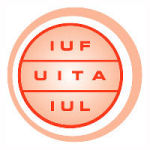IUF Calls for Urgent Global Action on Toxic Food Flavouring Ingredient Diacetyl
Posted to the IUF website 06-Nov-2007Share this article.
The IUF is calling for government regulatory authorities around the world to take urgent action to control the use of the food flavouring chemical diacetyl. Used as an ingredient in artificial butter flavours, diacetyl has been shown to cause serious and even fatal illnesses in workers exposed to it in the manufacturing process. Evidence has linked diacetyl to the crippling lung disease bronchiolitis obliterans, now widely known in the US as "popcorn workers lung."
While recent studies in the US have focused on its impact on workers employed in manufacturing microwave popcorn, it is also widely used in frozen and snack foods, confectionery, baked goods, dairy products, commercial baking mixes and other processed foods. Diacetyl is rarely identified as a specific ingredient in food products, lurking with other chemicals under the generic "artificial flavour" badge. Due to insufficient regulatory and labeling requirements, the full extent of worker exposure in food manufacturing in the US and around the world is not known.
In the European Union, the IUF has uncovered an alarming pattern of complacency and denial of responsibility in the face of this dangerous threat to worker health. Regulatory, safety and trade bodies approached by the IUF have acknowledged extensive use of diacetyl in food processing but would not provide details on where or how the chemical is used, the size of the exposed population or any details of health surveillance or research into diacetyl exposure as an issue in EU workplaces.
Occupational health and safety authorities in the US have known for over five years that even short periods of diacetyl exposure can induce bronchiolitis obliterans, a progressive lung impairment which is irreversible and fatal. The most common protective measure � paper masks � offers no defense against the effects of diacetyl inhalation.
Since 2000, the US National Institute of Occupational Health and Safety (NIOSH) has gathered evidence linking diacetyl exposure in food manufacturing to crippling lung disease among workers. Because the federal agency (OSHA) responsible for transposing these findings into concrete measures has resisted taking regulatory action, unions and occupational and public health advocates have pressed for political action. On September 26 this year, the US House of Representatives adopted a bill which (if passed into law) would require OSHA to set mandatory exposure limits for diacetyl and regulate exposure, controls and monitoring procedures.
Media attention, the threat of legislative action nationally and in California, and a growing number of successful lawsuits on behalf of injured workers have encouraged some large US food manufacturers to announce the phased elimination of diacetyl in their butter flavourings and its replacement with other (unspecified) ingredients. One notable exception is Kraft, the second largest global food company. In the midst of the legislative battle over diacetyl, Kraft announced its new "Golden Toasted Butter" flavouring for which it claims low calories and a huge range of potential applications. Golden Toasted Butter contains diacetyl. "To some customers diacetyl is not an issue, to others it is", said Kraft. The US Flavor and Extract Manufacturers Association, the national association of the U.S flavours industry, supported the congressional bill requiring mandatory OSHA standards.
Health and regulatory authorities in the EU appear unaffected by the accumulating evidence of diacetyl's toxicity established in the US. The European Commission currently has no plans to review the product's safety, stating only that is not on the priority list of substances for review. EU Occupational Safety and Health Directives currently set no exposure limits for diacetyl, which has never been evaluated with regard to inhalation and other forms of exposure in manufacturing. EU legislation on food flavourings does not specify use levels or define categories of foodstuffs that are permitted to contain flavourings. In response to an IUF request for information, the European Flavour and Fragrance Association (EFFA) would confirm only that diacetyl is manufactured in the EU, US, South Africa and China and can occur naturally as well as being manufactured. The organization was unwilling to disclose the names or locations of specific manufacturers or the product brands containing the flavouring.
Some European food manufacturers have responded to the growing call for action by introducing "safe" standards of their own. However, current knowledge and practice do not permit the establishment of safe exposure levels, if such exist, nor indicate what techniques are required for safe handling and usage of diacetyl. Under these circumstances, all talk of acceptable exposure, safe practices and industry "self-regulation" is a dangerous hoax.
No worker should be expected to work with a substance linked to a debilitating and potentially fatal occupational disease. In the absence of a comprehensive risk assessment of all workers potentially affected by diacetyl exposure, there is simply no way to determine if the US experience is being replicated elsewhere.
In view of this threat to workers' health and lives, the IUF is therefore calling on its member unions, on the wider labour movement, and on health care and medical organizations concerned with worker health and safety to immediately demand action by national and supranational health and safety regulatory agencies.
All available information regarding products and brands using diacetyl in food manufacturing must be made publicly available and readily accessible. Food workers' unions must be officially involved as active partners in a program of comprehensive research into the hazards associated with workplace exposure to diacetyl in food processing, including on-site investigation to monitor possible exposure, evaluation of production methods, assessment of protective measures and rigorous medical surveillance of all workers potentially at risk. Risk assessment must include an evaluation to determine whether the substance could be eliminated entirely and, if necessary, replaced with safer alternatives. The current state of knowledge warrants an immediate suspension of the use of diacetyl pending a thorough appraisal of its workplace risks.
